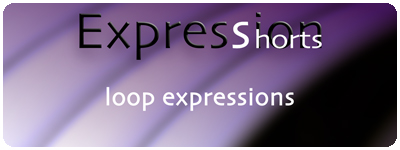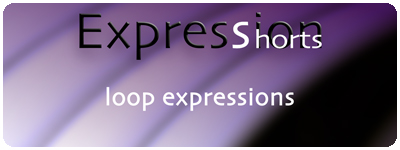
Looping is a very common task in our industry and is mostly associated with video footage of some form. In this episode I will explain the loopOut(), loopIn(), loopOutDuration(), and the loopInDuration() expressions. We’ll learn how they function with video footage as well as how they can work when applied to animated properties.
DISCLAIMER: For readers that copy and paste the following Expression code below, be aware that double quotes are currently showing as smart quotes. This is a PVC article default that I cannot override at the moment. I am looking for a workaround, but in the meantime you will need to make sure you paste the Expression code into a blank simple text document, NOT a rich text one, first to convert all code to simple text, then copy that and paste that into your Expression field in After Effects. Use TextEdit on Mac or NotePad on PC for this. If you paste directly into the Expression field without this step, you will end up keeping the smart quote formatting and it will cause a syntax error when you try to run the Expression. Just a heads up.
SOURCE CODE:
loopOut(type = “cycle”, numKeyFrame = 0);
NOTE: The above expression can be used on properties that support keyframes. If dealing with video footage it will traditionally be placed on the Time Remap effect for looping a clip.
loopOut() – The loopOut() expression is used to repeat a series of frames in succession based on property keyframes. loopOut() will play the layer as normal, then continue to loop that layer until the layer ends. There are two arguments that are required, the first being the loop type and the second being the number of keyframes to include from the out point.
type:
cycle: Will repeat a given keyframe range for the duration of the layer.
pingpong: Will repeat a given keyframe range for the duration of the layer, playing them forward, then backwards, then forwards.
offset: Will repeat a given keyframe range for the duration of the layer, with each repeated iteration being offset by a supplied amount.
continue: Does not loop anything actually, it instead maintains the keyframe velocity (speed) until the very end of the layer.
numKeyFrame:
This is referring to the number of keyframes to the left of the last keyframe nearest to the out point of the layer. See Fig. 1 below. This value defines how many keyframes are included for your loop animation and therefore defines the duration of the loop snippet itself. Say 1 keyframe in from the out point side of the layer is 10 frames in, then only those 10 frames will be looped out until the end of the layer.
Fig. 1
loopIn() – The loopIn() expression is identical to the loopOut() expression except that the looping happens at the beginning of the layer instead of the end.
loopOutDuration() – loopOutDuration() is identical in functionality to loopOut() except that you input seconds instead of number of keyframes for the second argument.
loopInDuration() – loopInDuration() is identical in functionality to loopIn() except that you input seconds instead of number of keyframes for the second argument.
CODE BREAKDOWN:
1) loopOut(type = “cycle”, numKeyFrame = 0);
There really is nothing to breakdown here given the type of code this happens to be. The explanations above pretty much cover it all. 🙂

